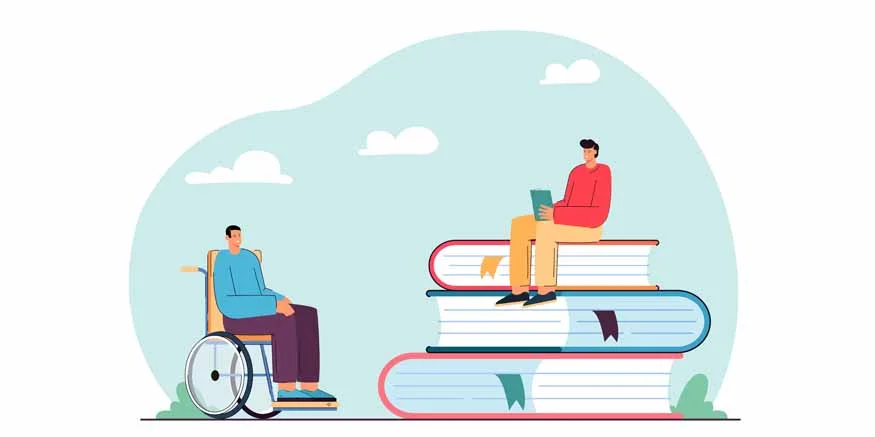Inclusive education, a practice of educating children with and without disabilities together in mainstream classrooms, is gaining recognition worldwide. It is a key approach to increasing educational access for students with diverse needs. This means that more children with special needs are now joining regular classrooms, fostering inclusivity. For inclusive education to succeed, educators need to acquire specialised knowledge and skills that extend beyond conventional teaching methods. In this setting, special education instructors often act as both case managers and teachers.
Defining Inclusive Education
According to UNESCO, inclusive education is “a process of addressing and responding to the diversity of needs of all learners through increasing participation in learning, cultures, and communities, and reducing exclusion within and from education” (UNESCO, 2009). Inclusive education, as UNESCO describes, extends beyond students with disabilities to encompass learners from all backgrounds, ensuring they have equal opportunities to learn and participate in their school communities.
Principles of Inclusive Education
- Principle of Togetherness
Inclusive education supports the holistic development of all children, regardless of caste, colour, or gender, by bringing them together on a shared educational platform. It encourages unity and collective growth in general school settings. - Principle of Equality
Equality in education means equal access to curriculum and resources for all learners. Although children in India are guaranteed educational rights by the Constitution, some are still excluded due to unique circumstances. Inclusive education addresses this gap, ensuring equal learning opportunities for all. - Principle of Participation
The foundation of inclusive education is active participation. Inclusive programmes allow children with and without special needs to study alongside one another in a non-discriminatory environment, fostering a sense of involvement for all. - Principle of Acceptance
Built on a zero-rejection policy, inclusive education ensures that no school can deny admission to children with special needs. Many parents of children with disabilities hope their child will receive an education at a mainstream school, enabling them to live more independently. Inclusive education embodies this acceptance, welcoming all children regardless of disability, caste, gender, or background. - Principle of Change
Inclusive education promotes adaptation, focusing on modifying the educational system to meet the child’s needs rather than expecting the child to conform. It values all children, recognising their unique cultural, social, and individual differences. - Principle of Equity
Equity recognises that while all students should have the same opportunities, they do not all start from the same place. It works to address and correct these imbalances by acknowledging individual requirements, allowing everyone to participate, develop, and contribute, regardless of their circumstances. - Principle of Empowerment
Inclusive education fosters empowerment, believing that empowered individuals are better equipped to advocate for their rights. It creates safe spaces for students, especially those marginalised, to influence decisions, policies, and conditions that impact their lives.
Benefits of Inclusive Education
- Schools adapt to individual differences, benefitting all students.
- Diverse classrooms promote acceptance and understanding among all students.
- Inclusive education is a more cost-effective option than segregated special schools.
- Children with special needs experience less stigma and greater social inclusion.
- Students with disabilities have access to a broader curriculum than in specialised schools.
Best Practices for Inclusive Education
- Universal Design for Learning (UDL)
Universal Design for Learning (UDL) is a widely adopted approach in inclusive schools. It allows students to learn equally in a supportive environment by adapting and modifying curriculum and teaching methods according to individual needs. - Differentiated Instruction
Differentiated instruction modifies lessons to cater to individual strengths and needs. While all students work towards the same learning objectives, differentiated instruction tailors the teaching approach to help each student achieve these goals. - Peer Support and Mentoring
Peer support and mentoring foster a sense of belonging and provide guidance for vulnerable and marginalised students. It also aids a smoother transition for children with special needs into an inclusive environment. - Individualised Education Plans (IEP)
Inclusive education supports students with special needs by adapting the curriculum, teaching strategies, and assessments. An Individualised Education Plan enables these students to reach their academic goals alongside their peers.
Also Read- Inclusive Education and ICSE Strategies for Children with Special Needs
Conclusion
Inclusive education is a vital approach that ensures equal participation for all students, fostering a sense of belonging and humanity while enabling learners to achieve their educational goals. In essence, inclusive education goes beyond merely placing students with disabilities in mainstream classrooms. It’s about creating an environment where every student feels valued and supported. By embracing inclusive education, we build fairer and more effective educational systems that benefit all learners.









